Story by Thandeka Percival
with photos by Rae Wiltshire
Every village in Guyana has its own unique personality, and Vryheid’s Lust, East Coast Demerara is one of the quiet ones. A mere six and half miles from Georgetown, it exudes the air of a community craving improvement yet strangely content in its simplistic atmosphere. It is a study in contrasts: between the past and present, success and despair, community passion and neglectful apathy.
The Vryheid’s Lust Primary School stands on the main road, but not so close so that students would be distracted by passing traffic. It is surrounded by ample playing space with collections of snagging green that definitely could use a trimming.
The snack seller outside the school, though shy was helpful. She lives at Plaisance, but pointed out the scheme area where “the old timers” might be found.
‘The old timer’
Milroy Hyman turned out to be a rather young-looking old timer; dressed all in black with his fedora gleaming in the midday sun.
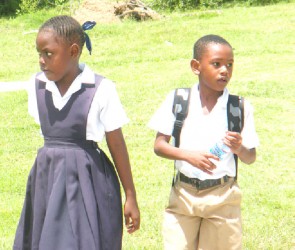
Hyman proudly spoke of the foundation training he received in the army as a nurse and medic. After retiring at the rank of Staff Sergeant, he, as a 40-year-old registered nurse went to work at GuySuco until 1989 when he travelled to the US and wrote the nursing exam. For the next 19¾ years he worked as an emergency room nurse at Brookdale Hospital in Brooklyn, New York. He stressed that it was the strong foundation he received in the Guyana Defence Force (GDF) which allowed him to do such. He has now returned to his village to begin construction of a building he has thought of turning into a library for the youths.
Hyman is dismayed that after his stint in the US he returned to a community much changed and reminisced about the establishment and development of Vryheid’s Lust.
He recalled that the houses in his part of the scheme were built by the disciplined services members in 1975 through self-help. Once completed, he said, the house and land cost the soldiers a little more than $9,700, an amount which at the time was
a lot. He said the bank held the transport for the property and it wasn’t until he had retired from the army in 1987 and migrated that he was able to pay off the amount he owed.
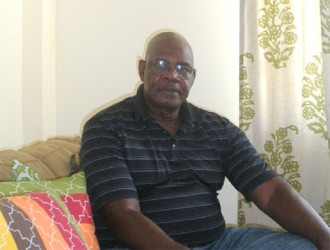
The plan, he said, was for the scheme to be constructed with disciplined services members on the outskirts surrounding the civilians who would occupy the middle of the scheme.
The original houses were two-bedroom flat concrete houses built of clay brick, which was then produced in Guyana or two-bedroom raised wooden houses. Each house was surrounded by a reserved piece of land which was to be used for farming and community development.
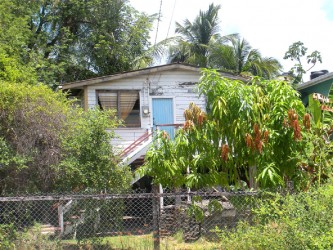
Some time after 1992, large numbers of people arrived and began to squat in the village. There was a confrontation between legitimate residents and the would-be squatters which resulted in the riot squad of the Guyana Police Force being summoned.
Hyman said he is disgusted with the lawlessness which characterises the establishment of structures in the community today. Leading Sunday Stabroek through a pathway, he noted that it was the residents who decided the width of that and all other pathways, not a building authority. That particular path was once wide enough to drive through, but is now almost too narrow to walk though.
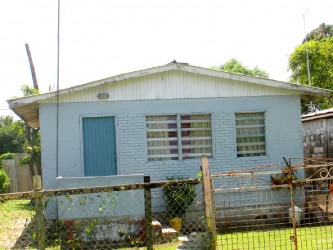
Jean Patricia March or Ms Jean as she is called, recalled that the land was sold to the Vryheid’s Lust number one group for $1 in 1973 and developed by community effort into a residential community. March who was the secretary of that group recounts that the land was formerly GuySuco’s and was linked to the group by late president Forbes Burnham.
They began building in 1973 and initial infrastructure took two years nine months to complete. In 1975, though there were still houses to be completed the community was declared open by the then president. As the first person to move in, Ms Jean has seen her community grow in size and shrink in achievements over the last 40 years.
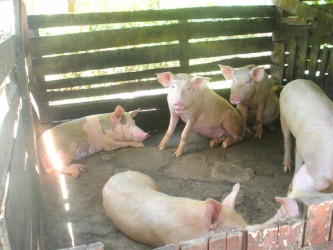
She said there were five groups of people who initially moved into the community; her group were followed by the soldiers, then the ‘Collymoore group’, followed by “the mobilization group” and finally prison officers.
‘$20 sport’
Residents bemoaned that there is simply nothing for young people to do in Vryheid’s Lust. During this newspaper’s visit in the middle of the day several young men were observed playing a game of cards or as they themselves styled it “$20 dollar sport.” Some of them, though they denied it, appeared to be of school age. Hyman pointed out that this is what most of the young men of the village do all day.
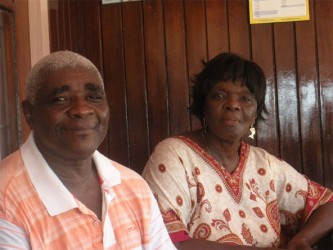
Children of all ages were observed milling around the community in the middle of the school day.
But not all of the young men in the community are idle. Bernard Joseph, 26, is a cane cutter and Joel Angus a self-employed weeder. Angus said that he was one of three weeders in the village and that most of the neatly trimmed yards were those of his customers. When asked about the state of the youth in the village he expressed sadness that there were so many who seemed happily unemployed. He said that efforts to establish the community playground were still underway and that he has personally made efforts to assist the young men of the village with work. On weekends and during school holidays he employs several young men of the neighbourhood to assist him in his work so that they can earn a little money which might assist in making sure that they attend school during the week. He hopes that his efforts along with those of other community-minded residents can yield a difference in the lives of these young people.
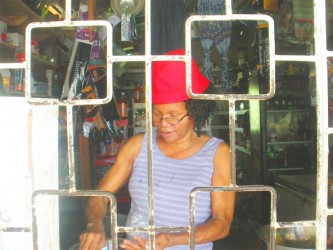
March and Isaac Benn, a retired GDF corporal, spoke of a playfield and community centre which the community attempted to build to afford the youth some options for recreation. They explained how the cooperative aspect of the project fell through after persons involved could not account for money raised in support of its completion. They also shared that the community could not agree on whether clergy from all the major religions in Guyana should be invited to consecrate the ground.
The playfield/community centre ground with its crumbling fence, patchy surface and drains choked by bushes has for over two decades lain fallow despite well intended efforts to make it productive. It seemed to mirror the young people it was intended for; full of potential but strangled by a lack of consistent and dedicated hard work.
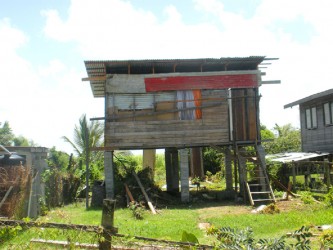
Benn, who has worked as a security professional all his life, noted that the petty crime in the community had become so bad that there were thoughts of forming a Community Policing Group.
March displayed her security measures which include locks on her gates and several security cameras. She lamented the fact that these measures were made necessary by youthful members of the community who through idleness and delinquency were “jumping people’s houses.”
The older residents are saddened that in a community which was built through self-help there is now such discord.
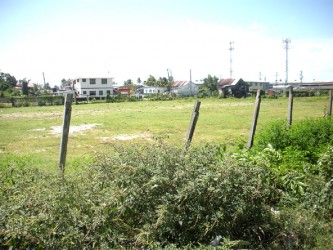
Hyman, Benn and March each spend part of their year in the village and part overseas. When in Guyana they spend their time assisting in community projects.
Benn is a small farmer raising pigs and a few cash crops to keep himself busy. He also tries his best to mentor and advise the younger members of the community.
March, who is a trained nurse and community planning specialist, consistently undertakes projects aimed towards the development of the community such as a May 2012 initiative to spruce up the village. At that time the members of the village engaged in a massive self-help drive to clear mounds of garbage and patch holes in several of the roads in the community. During this newspaper’s visit, March pointed to the road in front of her home and said that she was in the process of securing builders’ waste to patch the potholes.
Ms Waddell a retired GDF lance corporal, has a general store which sells almost everything. Snacks, groceries, clothing, cosmetics and cheerful conversation were all available. Waddell noted that since the community was a little distance from Georgetown she has tried to provide residents with necessities so that they can be spared unnecessary trips to the capital.









